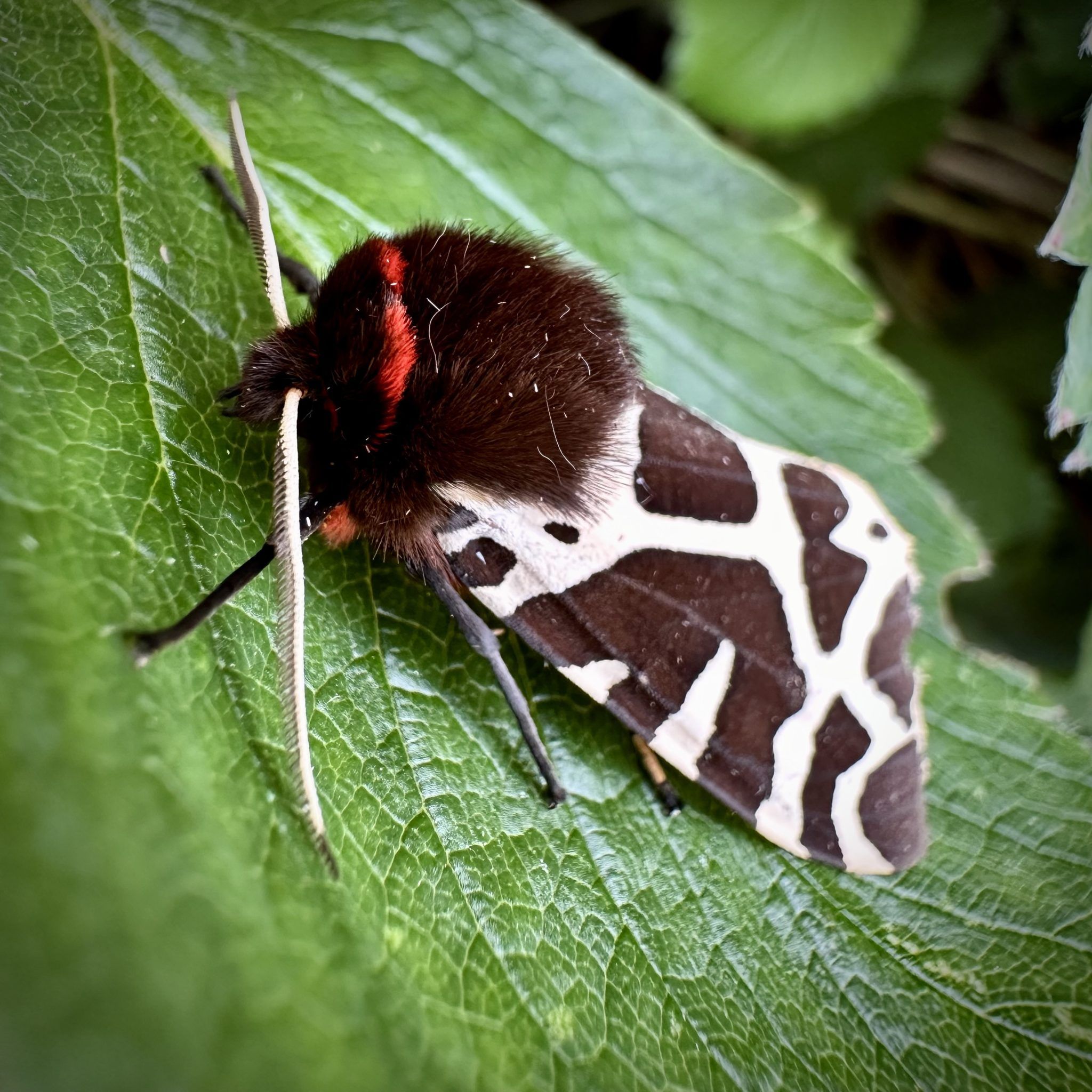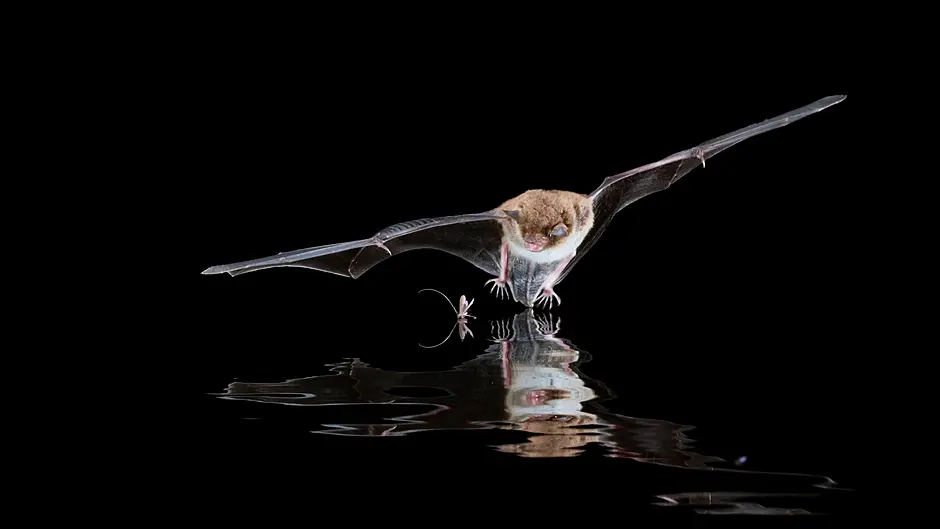

EVERY season brings its own wildlife wonders, yet as the evenings grow shorter and darkness creeps in earlier, I can’t help but feel a sense of loss. However, this sadness might be misplaced when considering the vital role darkness plays in the natural world.
Many beloved Irish wildlife species are either strictly nocturnal or have adapted to life in the dark to take advantage of the reduced competition and predation that night-time offers. These species include various bats, hedgehogs, badgers, foxes, barn and long-eared owls, moths, and numerous species of beetles. Studies have shown that less obviously nocturnal species such as fish, crustaceans, plants and microbes also rely on the natural cycle of light and dark, becoming disrupted under artificial light.
Going Batty
Every August, we participate in the Bat Conservation Ireland Daubenton’s bat survey, monitoring these unique bats along a one-kilometre stretch of the Ilen River. We are halfway through the survey, which involves two monitoring sessions. Fortunately, the results of the first survey show that these bats are still present along the Skibb town stretch of the Ilen. Daubenton’s bats are also known as water bats due to their close association with our waterways. They hunt insects by either catching them mid-flight with their mouths or scooping them up with their feet or tail from the water’s surface.
Light Too White
All bats have a low tolerance for artificial lighting, which can impact their roosting sites, flight paths, and feeding areas. Daubenton’s bats are particularly sensitive, waiting until it is suitably dark before emerging from their roosts to feed. If artificial light delays the onset of adequate darkness, the bats’ emergence can be postponed, reducing their feeding time. The type of lighting is also important, with bats being less sensitive to warmer, orange light. Some LEDs emit very bright white or blue-rich light, which is more harmful.
 We are fortunate in rural West Cork to have low levels of light pollution in many areas, a beautiful scene here at Myross graveyard. (Photo: Ann Haigh)
We are fortunate in rural West Cork to have low levels of light pollution in many areas, a beautiful scene here at Myross graveyard. (Photo: Ann Haigh)
A Real Hoot
Besides the bats, another highlight of the first half of the survey was spotting the ghostly white silhouette of a barn owl hunting over the reeds along the river. This iconic species was the subject of a survey carried out by BirdWatch Ireland during the summer of 2023. It is one of few positive wildlife stories, as the survey found that the barn owl breeding range in Co Cork had increased by 132% over the last 10 years, with 114 nest sites discovered in the county. These birds also benefit from a darker, more natural night sky as their vision and behaviour is adapted to low light.
Tough Times
An increasing body of research is highlighting the detrimental effects of excessive and inappropriate artificial night-time lighting. A study this month revealed trees in areas with night-time lighting develop tougher leaves than those in areas without lighting. While this might seem like a positive adaptation, the study also found that these tougher leaves are becoming too difficult for the insects that have evolved to eat them.
Moths to a Flame
For years, scientists wondered why moths and many other insects are attracted to light. A study published earlier this year put this debate to rest. It was discovered that, rather than being strictly attracted to the light, insects are thrown off course by it.
Under natural conditions, they orient themselves so that their upper surface faces the brightest part of the night sky. However, when artificial light is introduced, they are often prompted circle endlessly around the light, trapped by their natural ‘dorsal light response’ which tells them the brightest area is ‘up’ and to keep their upper surface facing this light. Sadly, other studies have also shown that this activity distracts them from pollinating plants and even reproducing.
 Garden tiger moths are one of the many species of moth living in our gardens that can get disturbed by excessive lighting. (Photo:Ann Haigh)
Garden tiger moths are one of the many species of moth living in our gardens that can get disturbed by excessive lighting. (Photo:Ann Haigh)
Light Pollution
Artificial lighting plays a crucial role in our lives. However, when overused or improperly managed, it can lead to light pollution. According to Dark Skies Ireland, artificial light at night can also harm human health, increasing risks of obesity, depression, sleep disorders, and more. The good news is light pollution is one of the easiest pollutants to address, leading to some helpful guidelines.
Guidelines
To reduce light pollution, it is recommended to use warm light instead of cool white or blue-wavelength LEDs outdoors. Light only what is necessary, use less powerful lights, put lights on timers or sensors, avoid lights that beam upwards, floor lights and bollards, and consider shielding lights to direct their shine downward. An additional simple step we can all take is to keep curtains and blinds closed to keep light indoors.
Embrace Darkness
As days shorten, we instinctively fight the encroaching darkness with artificial lights. Yet, life on Earth has thrived for billions of years in synchrony with the natural day-night cycle, which is deeply embedded in the biology of all plants and animals. According to Dark Skies Ireland, over 50% of the population can no longer see the Milky Way due to artificial lighting, and 20% of us use daytime vision at night. To address the increasing threat of light pollution and raise awareness, three dark sky reserves have been established here: Mayo Dark Sky Park, Kerry International Dark Sky Reserve, and OM Dark Sky Park & Observatory near Omagh. As individuals, the most important action we can take is to be mindful of our light usage. Reducing intensity or turning off lights not only saves on energy bills but also benefits local wildlife, enhances stargazing and may improve health and sleep. These days I now cherish my sleep and prefer to leave the wild nights to the wildli








